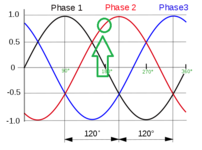ngen33r
Newbie level 6
I am looking to detect a point after a phase crossing. I have 3 phases at 24VAC coming from aux windings on a transformer. I have no neutral or earth reference from these taps. I would like to know when phase 2 crosses phase 1 and there is a 3V difference. I bread boarded a comparator with hysteresis, but it does not seem to function properly. Can anyone recommend an improvement or alternate method of detecting this point on a line that has notches, frequency drift & noise (generator supplied power). I could also use a zero cross point with hysteresis if that would be better, but noise from the generator will create false zero points that have to be dealt with somehow.
